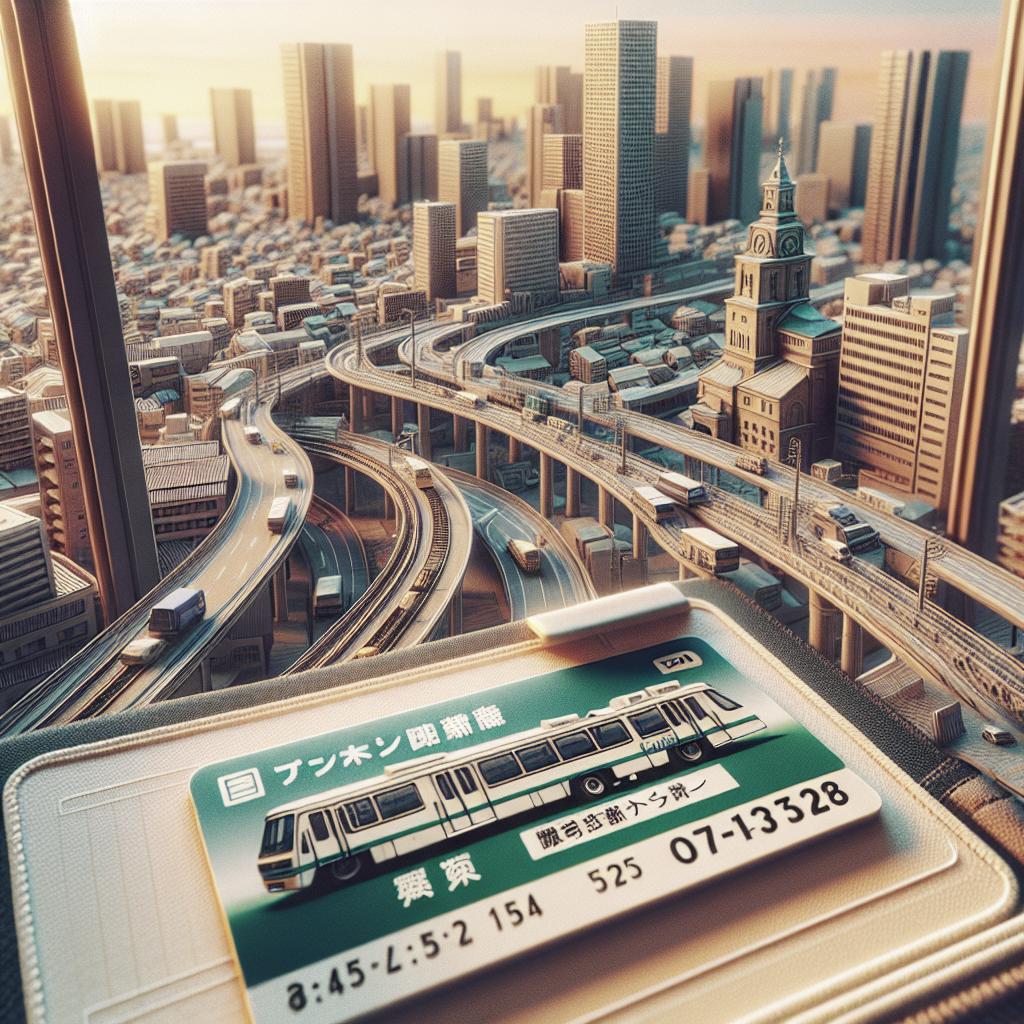“`html
Exploring Tsukuba Through Local Transport Passes
Navigating through Tsukuba and its surrounding areas has never been easier thanks to an extensive network of local transport options. This blog post provides a comprehensive guide on the local transport passes available for Tsukuba, making your travel efficient and cost-effective. We’ll begin by exploring key destinations accessible via public transport lines. Following this, we’ll offer a detailed look into the transportation systems that connect Tsukuba with major hubs in Tokyo, such as Akihabara and Shin-Okachimachi. We will also discuss specific amenities like Women-only carriages and highlight fare details including tickets, IC cards, and discount passes. For those who are interested, links to useful resources will be provided to help plan your travel seamlessly.
Key Destinations
Tsukuba offers a rich spread of experiences, from its science-centric attractions to natural wonders nearby. Whether you’re heading to the Tsukuba Expo Center, Tsukuba Botanical Garden, or the serene Mount Tsukuba, getting around is both tourist-friendly and convenient. Local transport networks are exceptionally well integrated with Tokyo and other regions in the Kantō area, making any journey straightforward and enjoyable.
The city’s location offers it as a perfect launchpad for expeditions to both cultural sites and urban attractions in neighboring areas. Whether you’re a science enthusiast, nature lover, or simply a curious traveler, Tsukuba’s transport system has your itinerary covered.
TRANSPORTATION
The main transportation backbone of Tsukuba is the Tsukuba Express (TX) line, offering rapid transit from Tsukuba to Akihabara in Tokyo. With speed and efficiency as its key features, the TX line is preferred by commuters and tourists alike. Buses and rental bicycles add more dimensions to the network, allowing for flexibility when exploring the city’s attractions.
For those new to the area, the signage and multilingual announcements make navigating the system user-friendly. With transport options ranging from rail to road, you’ll find it easy to organize day trips or delve into deeper explorations.
Akihabara Station
The high-tech hub of Akihabara is the primary connection point for visitors traveling to and from Tsukuba. Renowned for its rich anime culture and electronic shops, it’s also a major node of the JR Yamanote Line. The station offers easy transfers to other essential lines such as the Tokyo Metro Hibiya Line, making every corner of Tokyo accessible.
As the first stop from Tsukuba on the TX line, Akihabara serves as a cultural and technological gateway. Its bustling atmosphere and plethora of unique boutiques attract tourists and tech enthusiasts from across the globe.
Shin-Okachimachi Station
Shin-Okachimachi Station is well-situated for anyone keen on exploring the eastern parts of Tokyo. Known for its connectivity to the Toei Oedo Line, this station provides easy access to attractions such as Ueno Park and the Tokyo National Museum.
Its strategic position makes it a convenient transfer point for both leisure and business travelers, offering a less crowded option compared to major junctions. It’s a hidden gem for those looking to explore lesser-known areas with ease and efficiency.
TX Asakusa Station
Close to the traditional heart of Asakusa, this station offers easy access to the iconic Sensō-ji Temple. The nearby vicinity is filled with nostalgic eateries and shopping streets that capture the essence of old Tokyo.
While the TX line itself does not stop directly at Asakusa, the connection is seamless via nearby transfer options. This makes it a convenient jumping-off point for tourists seeking to experience a blend of history and modern commercial attractions.
Minami-Senju Station
Minami-Senju is a crucial access point for those venturing towards the northern suburbs of Tokyo. The station is serviced by JR Joban, Tokyo Metro Hibiya Line, and the Tsukuba Express, providing ample connectivity options.
A modest area with less hustle and bustle, you’ll find a mix of residential charm and vibrant local markets — perfect for an authentic taste of local life whether you’ll be in Tokyo for a short visit or a long stay.
Kita-Senju Station
Kita-Senju offers travelers a distinct slice of Tokyo life. This transport hub links with multiple lines ensuring efficient travel throughout the city. Home to the JR Joban Line and Tokyo Metro Chiyoda Line, you’ll find yourself well positioned to reach both urban and suburban areas alike.
The surrounding shopping streets and community ambiance provide a relaxing break from Tokyo’s crowded districts. For those seeking a balance between convenience and cultured exploration, Kita-Senju hits the mark.
Minami-Nagareyama Station
Located on the JR Musashino Line and the TX Line, Minami-Nagareyama Station serves as a gateway to some of the nearby suburban attractions and green spaces that many tourists might overlook.
Its proximity to family-friendly parks and leisure areas provides a welcome retreat for those looking to decompress away from the intensity of city exploration. For an itinerary that includes relaxing respites in picturesque residential neighborhoods, this station offers easy access.
Nagareyama-Otakanomori Station
This station boasts not only excellent connectivity on the TX line but also features a charming shopping area that combines leisure with a touch of modern luxury. It’s ideally suited for travelers with diverse interests who appreciate the appeal of both nature and retail therapy.
From trendy fashion outlets to artisan bakeries, the adjacent shopping complex adds a distinctive flair to the travel experience. Perfect for travelers who want to mix practical transit with leisurely indulgence.
Moriya Station
As an important node on the TX line further along the route to Tsukuba, Moriya Station offers local transit options for those interested in exploring nearby towns. With accessible travel options, you can immerse yourself in the Ibaraki prefecture culture and countryside.
Moriya’s strategic location also serves students and professionals commuting between Tokyo and suburban job hubs. It’s an excellent starting point for discovering both the pastoral and urban sights along the line.
Miraidaira Station
Located near Tsukuba, Miraidaira Station invites transit users to explore the rapidly developing part of Ibaraki. Known for its expanding residential communities and new businesses, it’s an exciting spot for those catching a glimpse of modern urban expansion.
The station offers a view of Japan’s future in city planning, making it a unique stop for observers of innovation in residential developments. Perfect for entrepreneurs and city planners looking for inspiration.
Tsukuba Station
The terminal station of the Tsukuba Express, Tsukuba Station allows easy access to one of Japan’s foremost science cities. With its research institutions, academic facilities, and leisure parks, Tsukuba is a place of dynamic growth and perpetual learning.
With hotels, sightseeing spots, and business centers located nearby, the station serves as a convenient hub for both domestic and international travelers. Whether you’re visiting for academic reasons or leisure, Tsukuba Station is your welcoming port of entry.
Services
The Tsukuba Express line offers a variety of services that enhance the commuting experience. High-speed trains operate consistently, allowing for a swift journey between Tsukuba and Tokyo, which is especially appealing for daily commuters.
Additionally, passengers can benefit from onboard Wi-Fi, charging stations, and multilingual announcements, ensuring both connectivity and clarity for all travelers. These services elevate the experience and optimize the time spent in transit.
Women-only Carriages
Women-only carriages are a thoughtful addition on several Japanese train lines, including the Tsukuba Express, usually during peak commuting hours. This service is designed to offer security and comfort to female passengers.
The provision of women-only carriages is indicative of efforts to address personal safety concerns, supporting a more inclusive public transport environment that prioritizes the well-being of all passengers.
Fares, Tickets, IC Cards, and Discount Passes
Navigating Tsukuba’s transport fare options is simple with a choice of single journey tickets, rechargeable IC cards like Suica and Pasmo, and various discount passes designed for frequent travelers. These cards can be topped up, providing flexible travel across different transport modes.
Opting for discount passes can lead to substantial savings for tourists and residents alike, who may find themselves using the transport system often. Numerous promotions are available throughout the year, encouraging exploration beyond regular routes.
Useful Links
To facilitate your exploration of Tsukuba and beyond, here are some useful links to visit:
- Kanto Railway Bus Routes
- Metropolitan Intercity Railway Company
- JR East Website for International Travelers
- PASMO IC Card Information
Next Steps
| Section | Content |
|---|---|
| Key Destinations | Explore Tsukuba’s attractions and its vicinity. |
| Transportation | Overview of transport modes, focusing on the Tsukuba Express line. |
| Station Highlights | Covers major stations from Akihabara to Tsukuba. |
| Services | Details on passenger services including Wi-Fi. |
| Women-only Carriages | Explanation of women-only carriages on trains. |
| Fares | Information on tickets, IC cards, and discounts. |
| Useful Links | Links for more detailed transport and tourism information. |
“`


